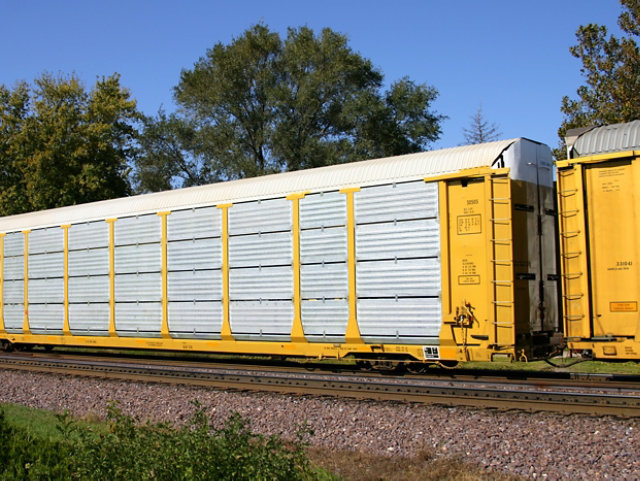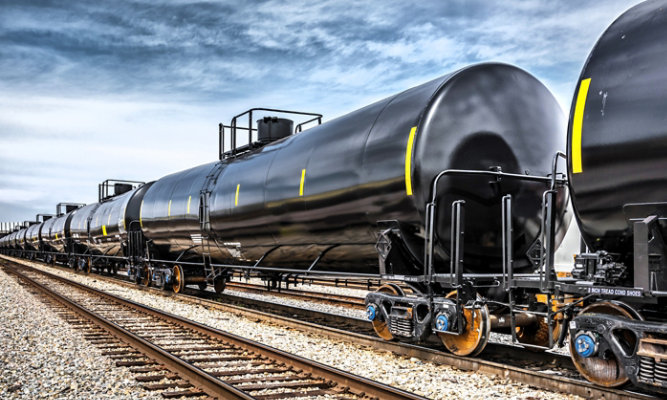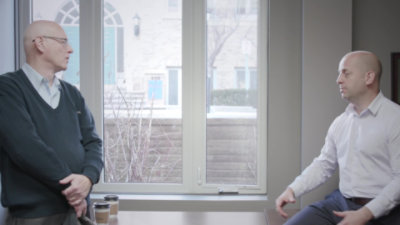
Ask the Expert:The Call for a Better-Looking Railcar
An interview with Michael Manetta, Global Market Director – Rail, Marine and Power Generation, Sherwin-Williams Protective & Marine
Find this article on page 17 of our new custom publication, Market Pulse - Advancements in Coatings Technology, featuring industry trends and thought leadership.
Q. What is the latest challenge concerning coatings for railcar exteriors?
A. One current challenge we’re hearing a lot about is aesthetics. Everyone understands that the main role of coatings in the rail industry is durability – protection from the elements, corrosion and abrasion. But in recent years aesthetics is getting more emphasis.
Q. Why this recent emphasis on aesthetics?
A. Epoxy coatings are highly effective at protection from corrosion and abrasion, but when exposed to ultraviolet rays, they will chalk and change color within a year or two. For example, black coatings will turn gray. Many railcar owners and lessees are no longer willing to accept this outcome. The lessees want a tank car that will retain its rich black color and luster. They care about what their cars look like.
Meanwhile, railcar owners do not want to have to recoat their cars for appearance purposes when it is not necessary from a protection standpoint. Their total cost of ownership improves the longer they can keep a car on the tracks without recoating. In addition, they may be able to command a higher price for a car that still looks good after many years of service.
Sherwin-Williams Protective & Marine embraced this challenge and explored many black pigments and epoxy formulations, looking for one that would retain its black color under UV exposure.
Q. What is the industry’s answer to this call for a better-looking railcar?
A. Sherwin-Williams Protective & Marine embraced this challenge and explored many black pigments and epoxy formulations, looking for one that would retain its black color under UV exposure. Lab technicians subjected these experimental formulations to multiple rounds of UV testing following ASTM International protocols. The result is our new product CarCladTM Macropoxy® HS 4200, which chalks black, not gray, and retains its luster, color and appearance much better over the full maintenance interval. It is a new and improved version of CarClad Macropoxy HS, which is a popular choice for hopper and tank car exteriors and a proven performer.
Q. Has the new technology been tested against standard epoxies?
A. Yes, for example, in one third-party verified test, we exposed CarClad Macropoxy HS 4200 and a standard epoxy coating to 1,750 hours of ultraviolet light. The results show the striking difference between the two products.
Q. From an application standpoint, what are the qualities that railcar owners value in a coatings product?
A. Railcar owners may coat or recoat thousands of cars per year, so speed and efficiency of the application is very important. It’s all about quick returns to service. Therefore, owners need a high-solids coating, like CarClad Macropoxy HS 4200, that can be applied in one direct-to-metal (DTM) coat.
In addition, railcars usually require about 4-6 mils dry film thickness (DFT), but around complex geometries, such as ladders or wheels, applicators may need to hang additional wet mils as they make multiple passes. CarClad Macropoxy HS 4200 is suited to this purpose, with the ability to hang up to 18-20 mils wet film thickness (WFT).
Finally, applicators need some latitude in application conditions, including temperature. Solvent-based coatings, such as CarClad Macropoxy HS 4200, are more flexible in this regard than waterborne epoxies.
Discover More
Industry Expertise and Innovation
See how we help customers find customized solutions for their project and application challenges.
Our Rail Expertise
Explore our industry solutions and technology to help protect your assets.
LEARN MOREProduct Lookup
Find out more about our innovative coatings for a variety of industries.
FIND A PRODUCT
